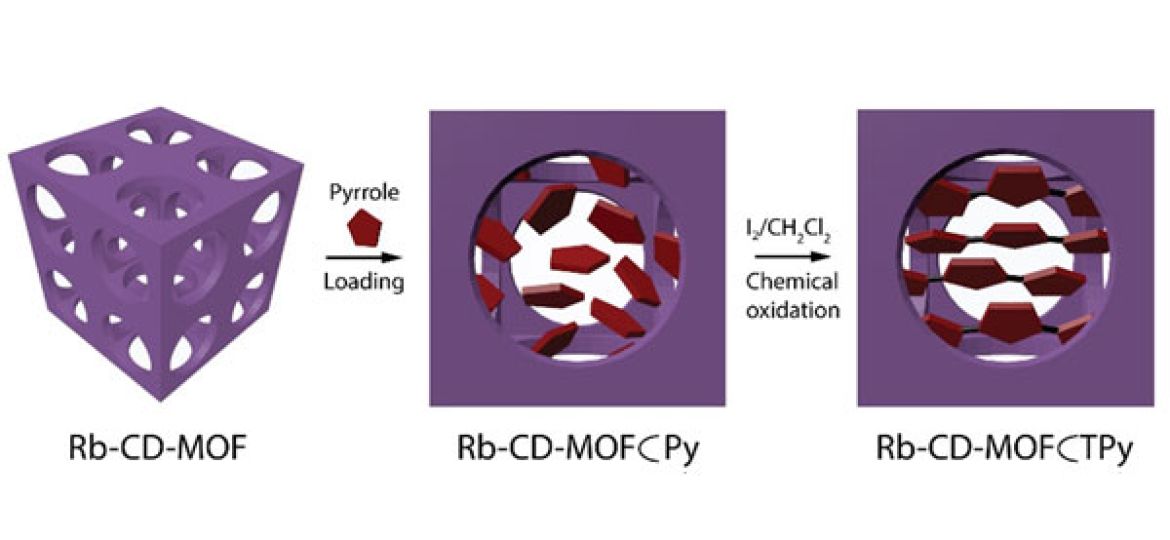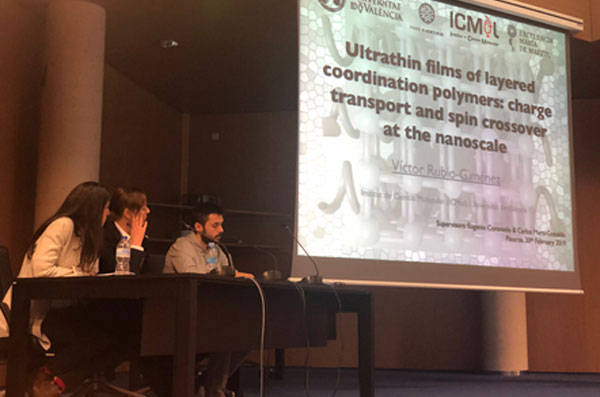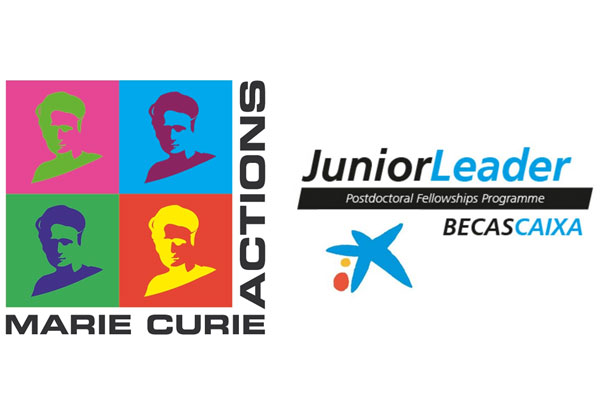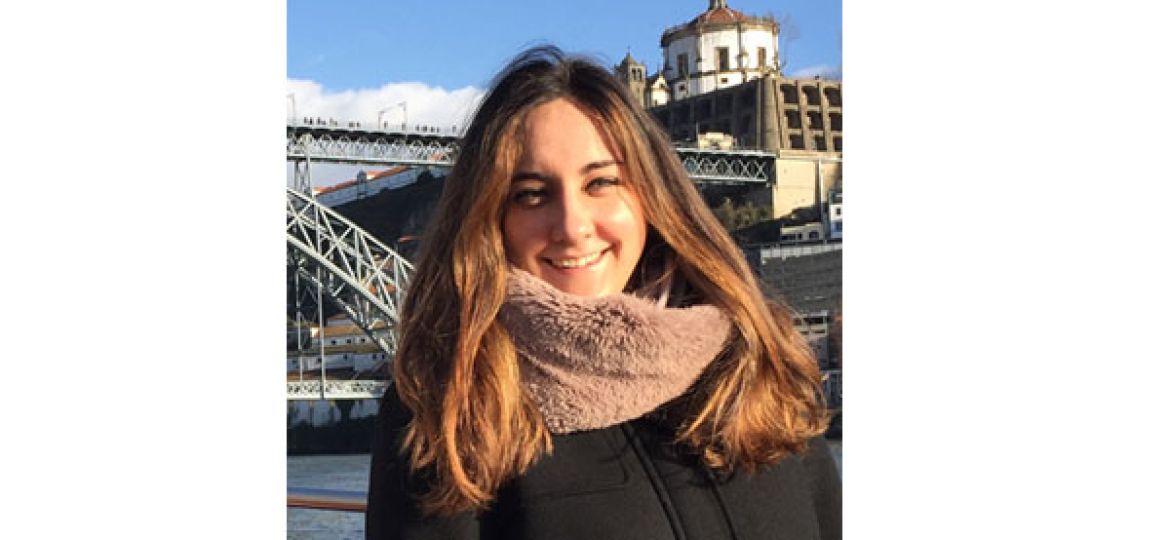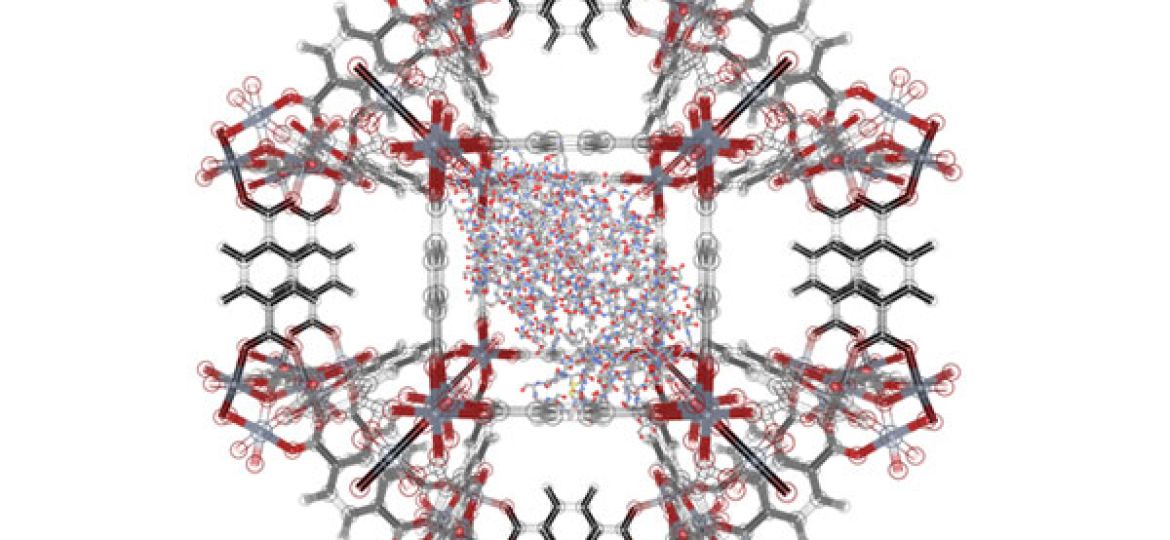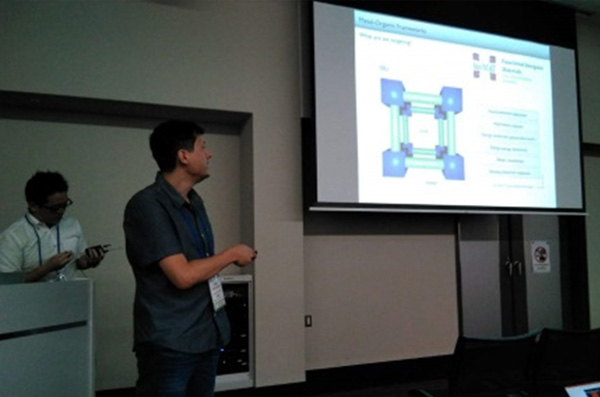Alejandros work has just been published in Angewandte Chemie Int. Ed. In this paper, Single-Crystal X-Ray Diffraction is used to follow the restricted polymerization of pyrrole inside a cyclodextrin MOF, which generates discrete units of highly reactive cationic terpyrrole inside the pores. This work gives unprecedented information about the host-guest interactions that limit the formation of polymers, that can be useful to future works using MOFs as templates for polymerization processes. For more info see here
Katherine Mirica (Dartmouth College) visited us and presented the recent advances of her team on conductive metal-organic frameworks to develop advanced sensory platforms. We are hopeful this will initiate a fruitful collaboration between both groups.
Victor has officially become Dr. Rubio-Giménez after defending his PhD Thesis. The jury was formed by Prof. Mirica, Medina and Gándara. Victor will continue his work on conductive and magnetic MOFs until September 2019 when he will join Ameloot´s group at Leuven with a FWO Fellowship. Congratulations!
Isabel and Francisco have been awarded the Marie Curie and La Caixa Junior Leader Fellowships, respectively. These are very competitive calls that highlight their excellent scientific and academic performance. Congratulations!
Carlos joined Yaghi´s lab at UC Berkeley as a visiting scholar to discuss on potential collaborations on water adsorption and CO2 reduction with heterometallic titanium organic frameworks. Thanks for the invitation!
Carmen graduated in Chemistry in 2017 at the University of Santiago de Compostela an got a master in Chemistry at the University of Valencia in 2019. She will be working in the design of porous and materials and layered clays for water remediation and removal of toxics.
Elisa comes from Lille (France).For her internship as an Erasmus student, she will be helping Belén with the synthesis of chiral MOFs from proteogenic building blocks.
Víctors study on the nanostructuration of spin crossover coordination polymers has just been published in Chemical Science. A collaborative endeavor with contributions from FuniMat, RTMM and SMolMat groups of the ICMol, together with Unité Mixte de Physique CNRS/Thales and DEIMOS beamline of the Soleil synchrotron. Below a critical thickness, the completeness of the spin transition is sharply affected due to an equally dramatic film microstructure transition from fully coalesced layer into segregated nanocrystalline particles. This careful examination of the spin crossover properties of films at the nanoscale provides relevant information for scientists working towards the integration of this switchable materials into nanometric electronic and spintronic devices. For more details take a look at the full text here
On a recently published joint work, Jose, Neyvis and Belén used a novel method to induce the translocation of an enzyme into the pores of a MOF. Their procedure is based in a partial denaturation of the enzyme followed by its refolding into the polar cavities offered by the host. Thanks to a combination of experimental and theoretical work, we managed to demonstrate that the enzyme adopts a different conformation inside the MOF, granting it enhanced activity, stability and recyclability. The work is now available in Chemical Science
MOF ultrathin films. Victor presented our recent work on spin-crossover materials at the nanoscale. For more details see here

